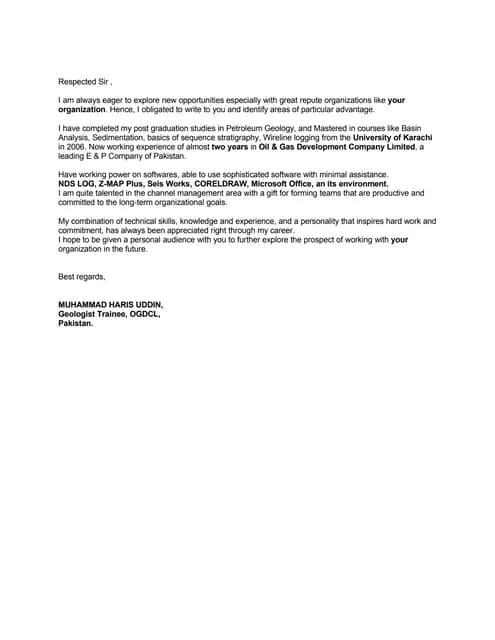What is a Geologist Cover Letter
A geologist cover letter is a crucial document that accompanies your resume when applying for geology-related positions. It serves as a personalized introduction, allowing you to showcase your unique skills, experience, and enthusiasm for the specific job. Unlike a resume, which presents a concise overview of your qualifications, a cover letter provides an opportunity to tell a story, explain your motivations, and demonstrate how your abilities align with the employer’s needs. Think of it as your first impression, a chance to make a strong case for why you are the ideal candidate. It should be tailored to each position, highlighting the most relevant aspects of your background and expressing genuine interest in the role and the company. A well-crafted cover letter can significantly increase your chances of getting an interview.
Why a Great Cover Letter Matters
In the competitive field of geology, a great cover letter can be the deciding factor in whether your application makes it to the interview stage. It offers a platform to differentiate yourself from other applicants by going beyond the standard list of qualifications presented in your resume. A compelling cover letter shows that you have invested time and effort in understanding the specific requirements of the role and the values of the company. It allows you to elaborate on your achievements, explain any gaps in your employment history, and demonstrate your passion for geology. Furthermore, a well-written cover letter showcases your communication skills, which are essential for many geology-related roles. It provides insight into your personality, work ethic, and commitment to the profession, ultimately helping you make a memorable impression on potential employers.
Key Elements of a Geologist Cover Letter
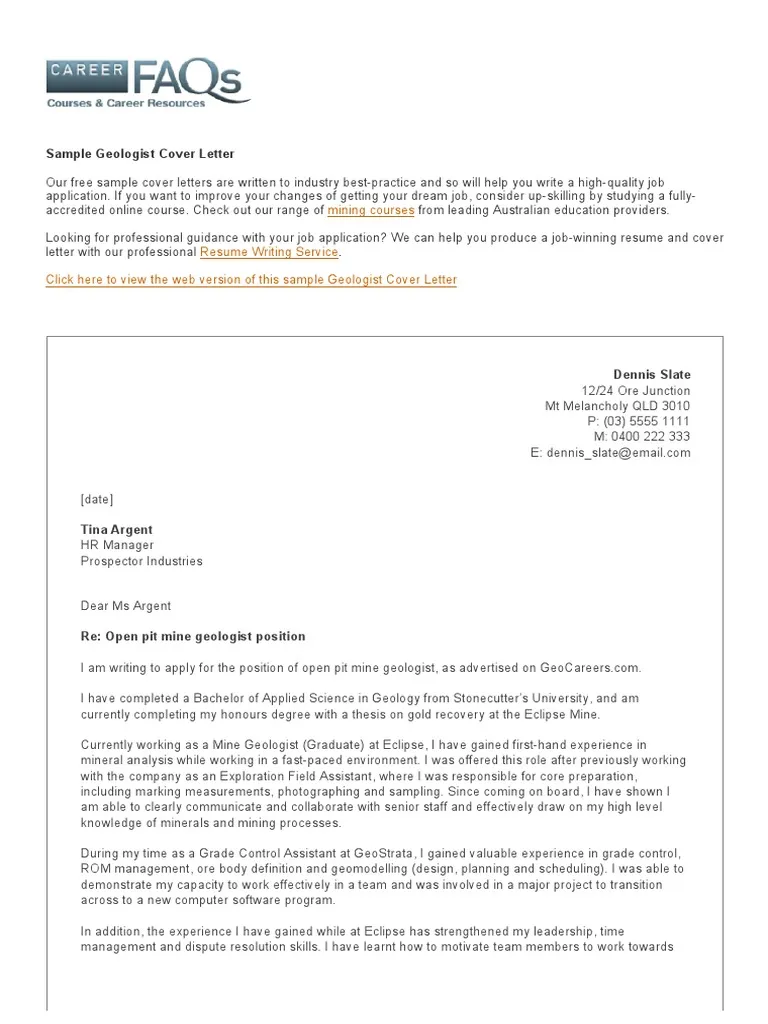
A strong geologist cover letter includes several key elements that work together to create a compelling narrative. These elements ensure that your letter is professional, informative, and tailored to the specific job. From the layout to the tone of your writing, each section should be carefully crafted to present you as the best candidate for the position. This includes not only the content but also the formatting, making sure it is easily readable and well-organized. Consider your cover letter a story that you are telling the hiring manager. You will need to start by giving them a good impression, then show your best skills and experience.
Your Contact Information
Begin your cover letter with your contact information. Include your full name, address, phone number, and professional email address at the top of the document. This information is essential for the hiring manager to easily reach you. Make sure your email address is professional-sounding; avoid using nicknames or casual phrases. The contact information helps establish your identity, while the email and phone number provides a direct way for the employer to contact you. Your full address is also important, as it can give the hiring manager an idea of where you are located. It is very important to double-check all the information before sending it.
Date
Below your contact information, include the date the cover letter is written. This is a standard practice that helps establish the date of your application. This information is useful for the employer’s record-keeping and helps them keep track of the date they received the document. The format of the date should be consistent with the style of your letter. Using the current date is a simple way to show when you are applying for the job, which may be important if the employer is reviewing multiple applications over time. The date helps ensure that the application is relevant and timely.
Hiring Manager Information
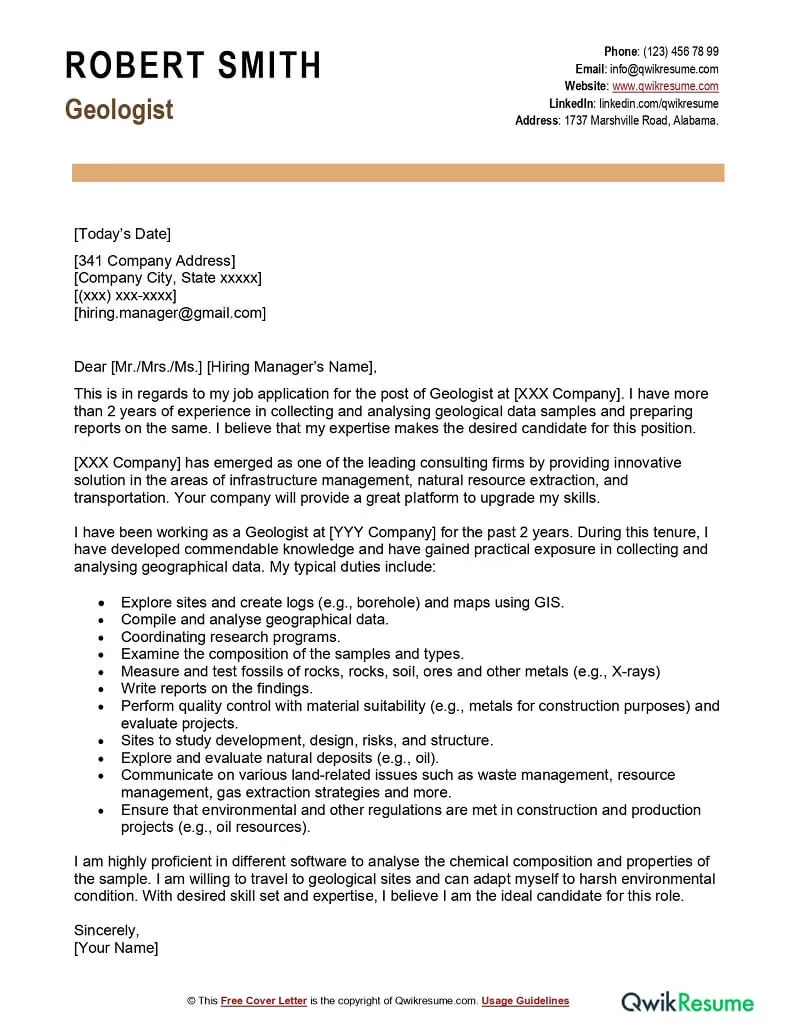
If possible, address your cover letter to a specific person, such as the hiring manager or the head of the geology department. Research the company’s website or LinkedIn to find the appropriate contact. Addressing your letter to a specific individual demonstrates your initiative and attention to detail. It shows that you have taken the time to learn more about the company and the role. If you are unable to find a specific name, use a professional title like ‘Hiring Manager’ or ‘Recruiting Team’. Avoid generic greetings like ‘To Whom It May Concern’ because this shows a lack of effort.
Professional Greeting
Start your cover letter with a professional greeting. Use ‘Dear Mr./Ms./Mx. [Last Name]’ if you know the hiring manager’s name. If you don’t have a specific name, you can use a greeting like ‘Dear Hiring Manager’. The greeting sets the tone for the rest of the letter and helps establish a professional relationship with the reader. Make sure you spell the name correctly. The greeting should be followed by a comma. You want to set a good impression so that the hiring manager will read the letter. A proper greeting is a sign of respect.
Highlight Your Skills and Experience
In the body of your cover letter, highlight your most relevant skills and experiences. Tailor your letter to match the specific requirements of the job description. This is your chance to showcase your qualifications and explain why you are a good fit for the role. Provide specific examples that demonstrate your abilities, such as projects you have worked on, technologies you have used, and results you have achieved. Use action verbs to describe your accomplishments and quantify your achievements whenever possible. Make sure your letter is easy to read and the information is well-organized, allowing the hiring manager to quickly grasp your value.
Relevant Skills to Showcase
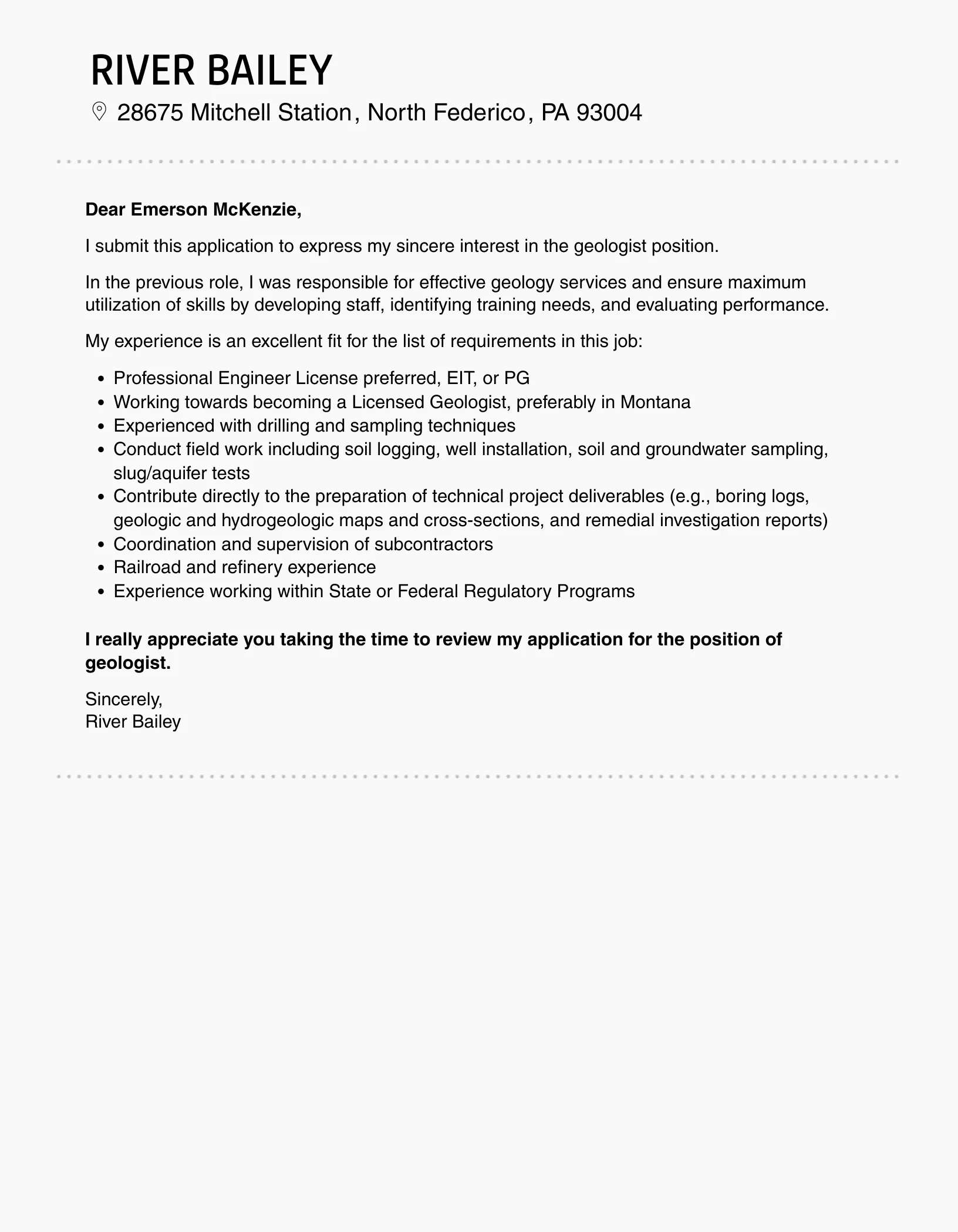
When highlighting your skills, focus on those that are most relevant to the job description. Some key skills to showcase in a geologist cover letter include geological mapping, data analysis, report writing, project management, and experience with specific software or equipment. It is important to review the job description carefully and identify the skills that the employer is seeking. Provide specific examples of how you have used these skills in your previous roles. Consider including the type of rock or mineral in the context of the job. This can show the employer you understand the details. Tailoring your skills to the specific requirements of the job will make your cover letter more impactful.
Quantifiable Achievements
Whenever possible, quantify your achievements to demonstrate the impact of your work. Instead of saying ‘Improved project efficiency’, state ‘Improved project efficiency by 15% through the implementation of [specific method]’. Quantifiable achievements provide concrete evidence of your abilities and make your accomplishments more convincing. Use numbers, percentages, and other metrics to illustrate your successes. Quantifying your achievements helps the employer understand the value you can bring to their organization. It also helps to distinguish yourself from other candidates who may make similar claims without providing supporting evidence.
Tailoring Your Letter to the Job
Customizing your cover letter for each job application is essential. Generic cover letters often fail to impress hiring managers because they lack the specific details and personalized touch that demonstrate your genuine interest in the role. Tailoring your letter requires research, careful consideration of the job description, and a clear understanding of what the employer is looking for. This shows that you are committed to the job and that you are willing to do the extra work needed to get it. By matching your skills and experience to the requirements of the job, you significantly increase your chances of getting an interview.
Researching the Company
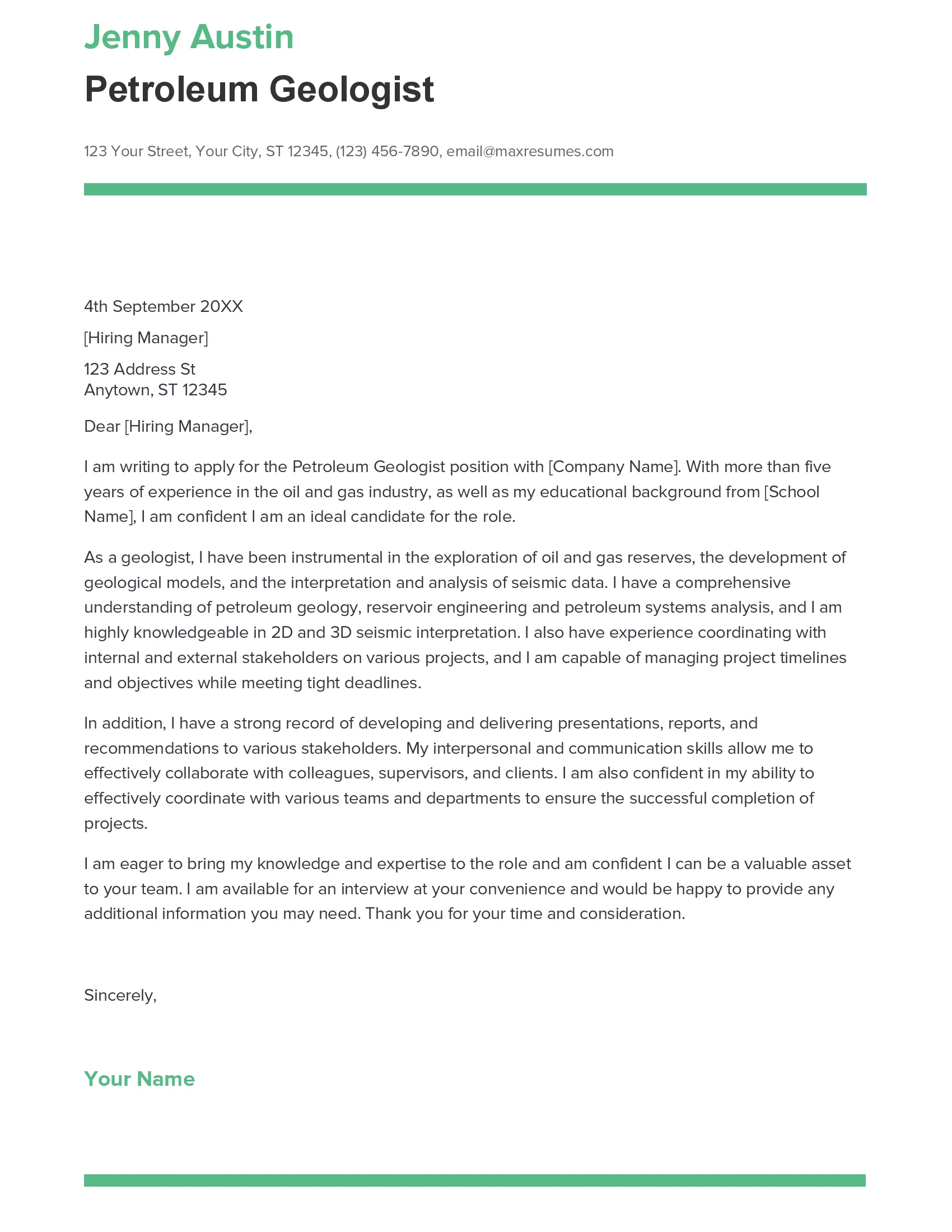
Before you start writing your cover letter, research the company and the specific job you are applying for. Visit the company’s website, read news articles, and check their social media presence to learn more about their mission, values, and recent projects. This research will help you understand the company’s needs and tailor your cover letter accordingly. Knowing the company’s goals will allow you to better show how your skills and experience align with their needs. Mentioning specific company projects or initiatives in your letter will demonstrate your interest and show the employer that you have taken the time to learn about their organization.
Matching Skills to Job Requirements
Carefully review the job description and identify the key requirements and qualifications the employer is seeking. Then, compare these requirements with your own skills and experience. Highlight the skills that match the job description, and provide specific examples of how you have demonstrated these skills in your previous roles. You can use keywords from the job description and incorporate them naturally into your cover letter. This targeted approach demonstrates that you have the skills the employer is looking for and that you are a good fit for the role. Make sure to present your skills in a clear, concise, and compelling way.
Using Keywords
Incorporate relevant keywords from the job description throughout your cover letter. Many employers use Applicant Tracking Systems (ATS) to scan resumes and cover letters for specific keywords. By including these keywords, you increase the chances of your application being noticed. But don’t just stuff keywords into your letter. Instead, weave them naturally into your sentences. Place them within the context of your skills and experience, making sure that they are relevant and accurate. Keywords can also help the hiring manager quickly identify the key skills and qualifications that you possess.
Formatting and Tone
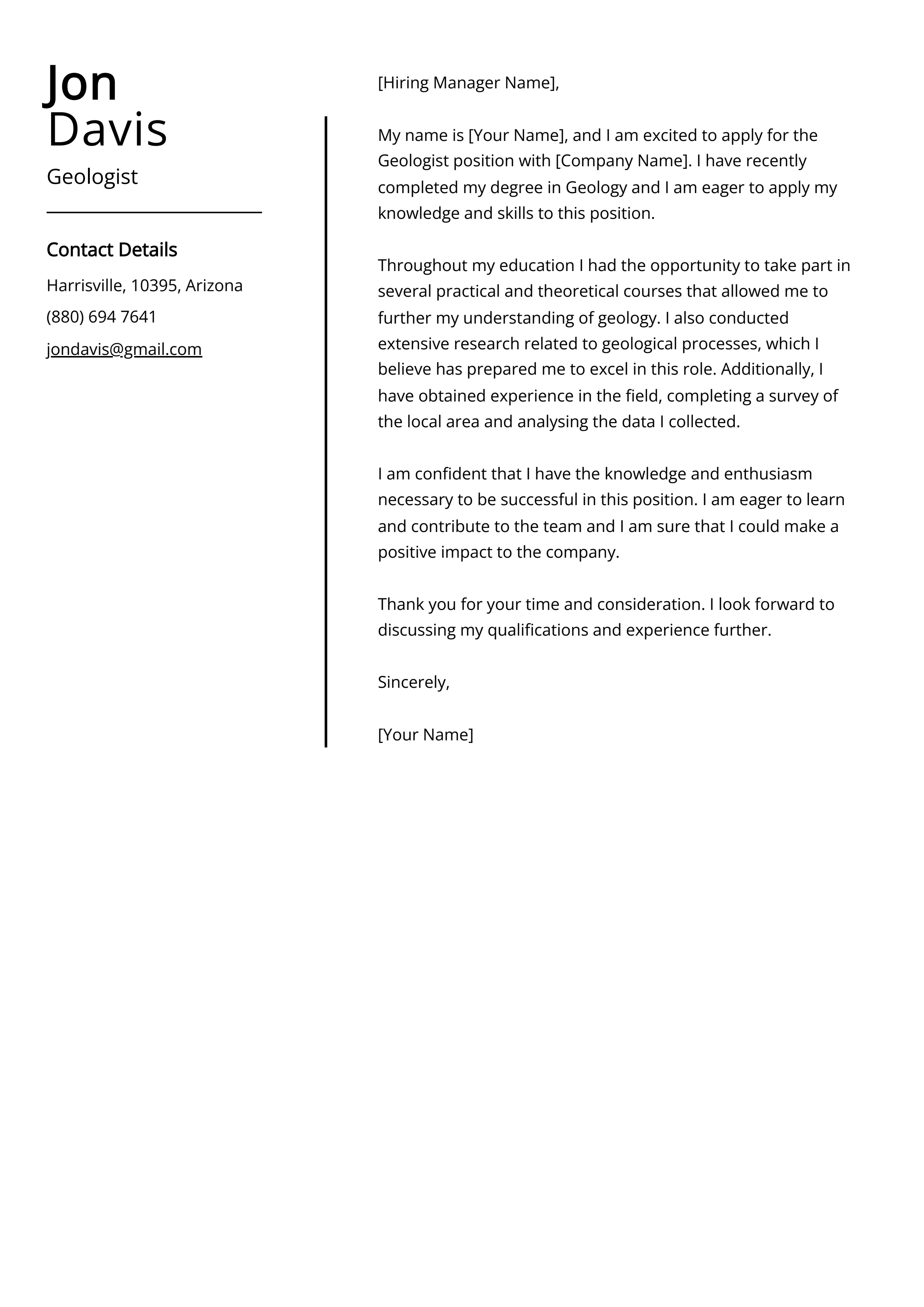
The format and tone of your cover letter are just as important as the content. A well-formatted and professionally written letter demonstrates your attention to detail and your ability to communicate effectively. It is important to choose a professional format, use clear language, and maintain a positive tone. Always proofread the document to ensure that there are no errors. The format and tone you use set a professional image, which is important for geologist jobs. Remember that employers are also judging how well you can present your information.
Professional Formatting
Use a clean and easy-to-read font such as Times New Roman, Arial, or Calibri, with a font size between 11 and 12 points. Use standard 1-inch margins and single spacing between lines. Divide your letter into clear paragraphs with headings and subheadings to make it easy to read. Use bullet points to highlight key skills or achievements. Ensure that your cover letter is free of any formatting errors. The goal is to create a document that is both visually appealing and easy to navigate, which helps the hiring manager quickly understand your qualifications.
Using Active Voice and Positive Tone
Use active voice and a positive tone throughout your cover letter. Active voice makes your writing more direct and engaging, while a positive tone conveys enthusiasm and professionalism. Instead of writing, ‘Responsibilities included the analysis of data’, write ‘I analyzed data’. Instead of saying ‘I am not familiar with…’, say ‘I am eager to learn…’. Focus on your accomplishments and the value you can bring to the company. A positive tone shows that you are confident, enthusiastic, and a valuable asset to the company.
Proofreading and Editing
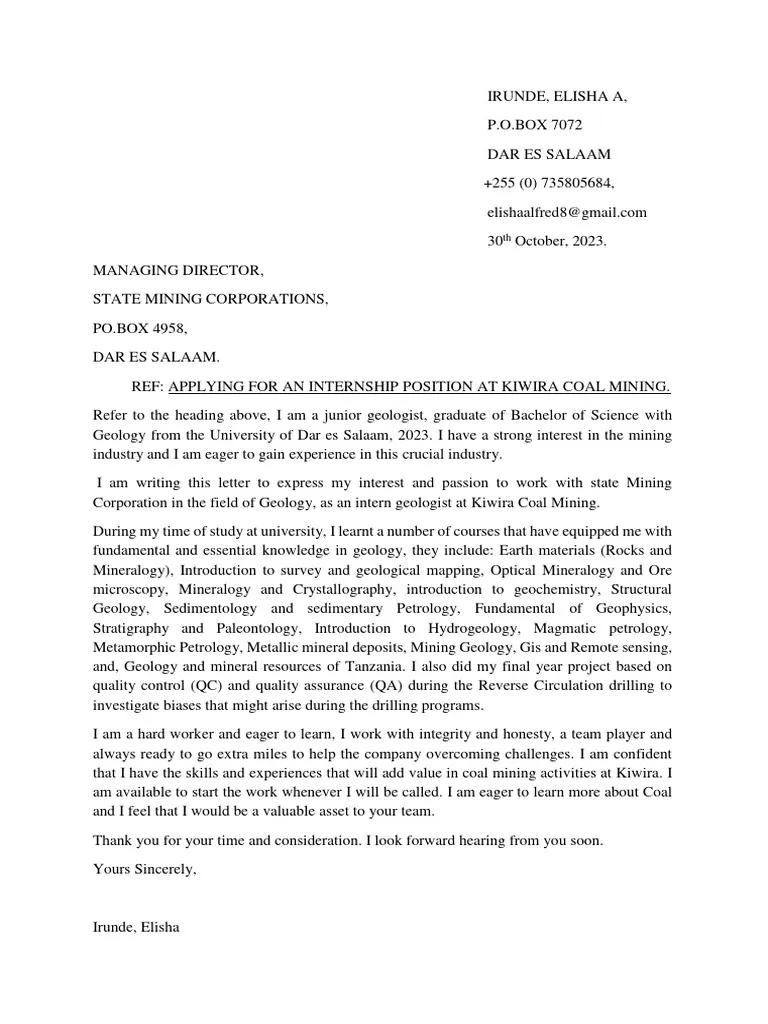
Proofread your cover letter carefully for any errors in grammar, spelling, and punctuation. Errors can undermine your credibility and make a negative impression on the hiring manager. Read your cover letter multiple times, and consider asking a friend, colleague, or career advisor to review it as well. Ensure that your writing is clear, concise, and error-free. Proofreading is an essential step in ensuring that your cover letter presents you in the best possible light.
Closing Your Cover Letter
The closing of your cover letter is an important opportunity to express your enthusiasm for the role and to encourage the hiring manager to contact you. A strong closing reinforces your interest in the position and provides a clear call to action. A well-crafted closing leaves a lasting impression and increases your chances of getting an interview. It’s your last chance to make a positive impact on the reader and to secure your place as a top candidate.
Expressing Enthusiasm and Interest
In your closing paragraph, reiterate your enthusiasm for the position and the company. Briefly summarize why you are a good fit for the role, and express your genuine interest in the opportunity. Mention specific aspects of the job or company that excite you, showing the hiring manager that you have done your research. Expressing your enthusiasm helps the hiring manager see your commitment, which may make you stand out more than other candidates. Let them know why you want the job!
Call to Action
Include a clear call to action in your closing paragraph. This could be a statement like, ‘I am eager to discuss my qualifications further in an interview’ or ‘I welcome the opportunity to learn more about this exciting opportunity’. A call to action encourages the hiring manager to take the next step and contact you. Make it easy for them to move forward. It shows you are serious about getting the job.
Proper Closing and Signature
End your cover letter with a professional closing, such as ‘Sincerely’, ‘Best regards’, or ‘Thank you’. Leave space for your signature, and type your full name below. If you are sending your cover letter electronically, you can type your name and include your digital signature if you have one. Ensure that your closing is polite and appropriate for the context. Your signature provides a personal touch and confirms the authenticity of the letter. It provides a professional end to the communication.
Common Mistakes to Avoid
There are several common mistakes that can significantly reduce your chances of getting an interview. Avoiding these mistakes will help you make a strong impression on potential employers. Always ensure that your cover letter is free of the errors mentioned below.
Generic Cover Letters
One of the biggest mistakes is sending a generic cover letter that is not tailored to the specific job. Hiring managers can easily spot generic letters, and they are unlikely to consider candidates who do not demonstrate a clear understanding of the role. Always tailor your cover letter to each job application by researching the company, highlighting the relevant skills, and addressing the specific requirements of the position. Personalize your letter to demonstrate your genuine interest in the opportunity and the organization.
Typos and Grammatical Errors
Typos and grammatical errors can damage your credibility and make a negative impression. Always proofread your cover letter carefully before submitting it. Use a grammar checker, and ask a friend or colleague to review your letter as well. Even a single mistake can indicate a lack of attention to detail, so take the time to ensure that your writing is polished and error-free. Make sure all the information is accurate and well-written.
Lack of Enthusiasm
A cover letter that lacks enthusiasm or fails to express your interest in the job is unlikely to capture the hiring manager’s attention. Make sure to show your enthusiasm for the position and the company throughout your letter. Highlight the aspects of the role that excite you, and demonstrate your commitment to the geology field. Let your passion shine through. Enthusiasm will help you make a good impression on the hiring manager.
